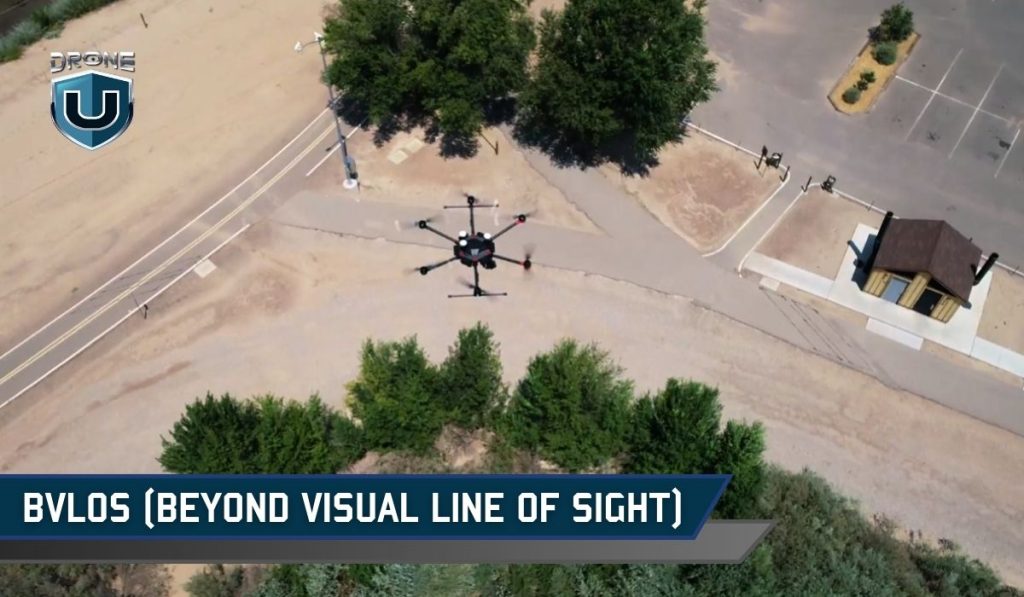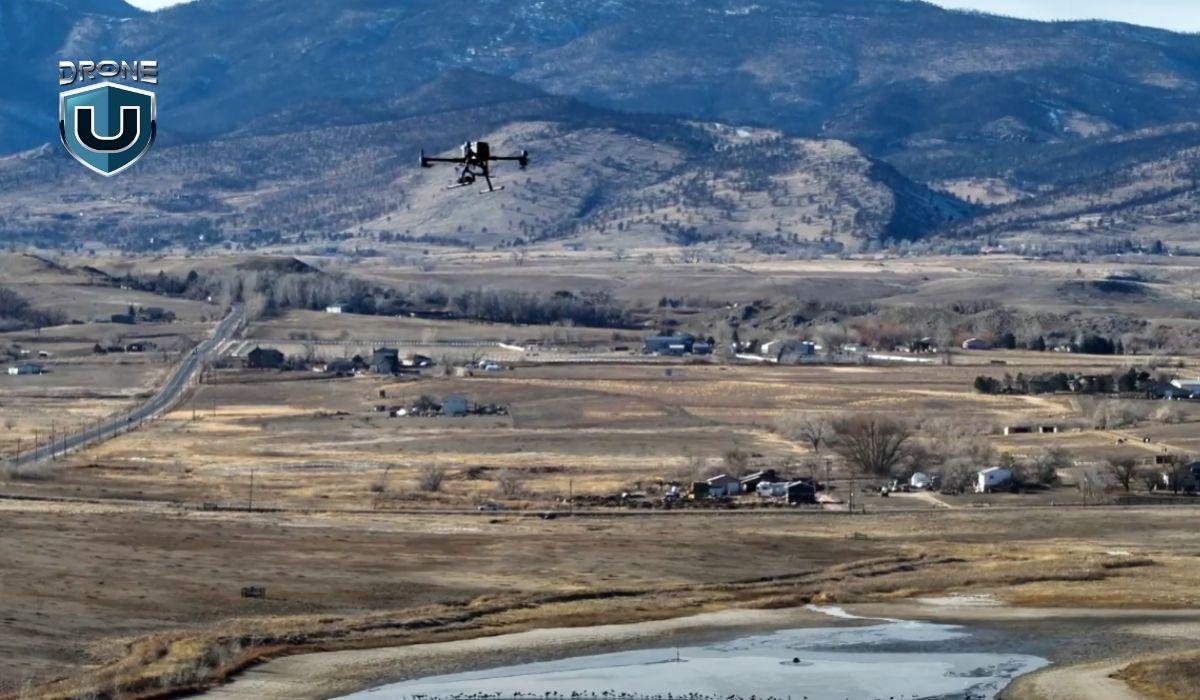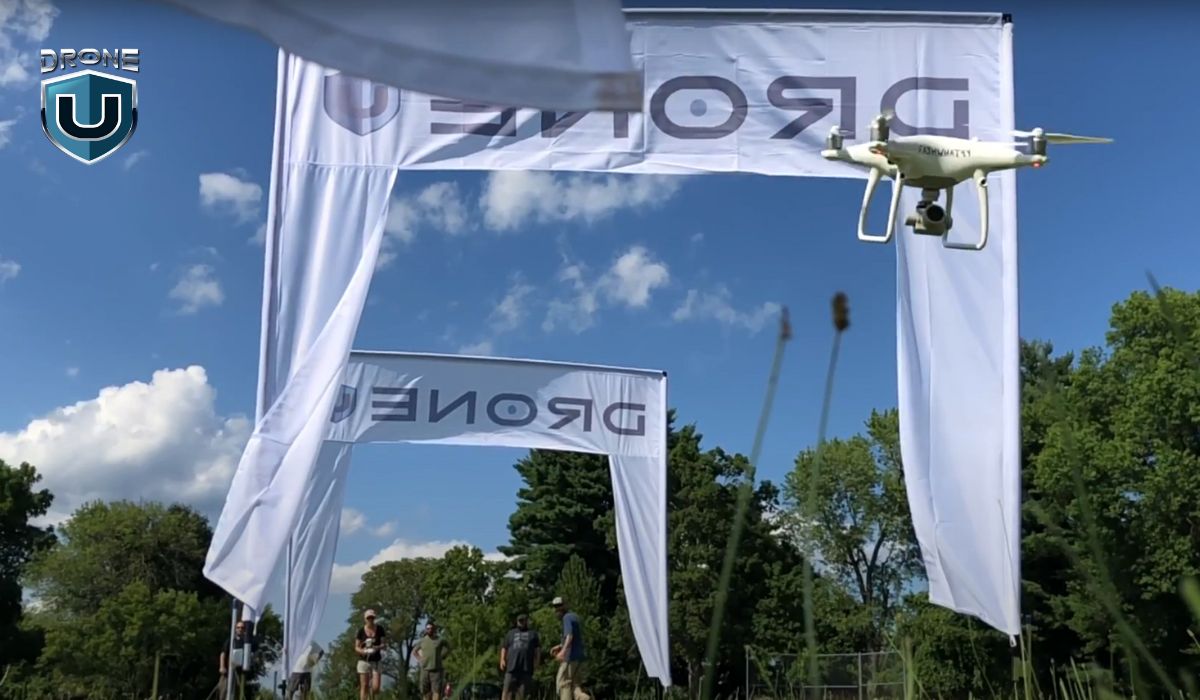
Remember when drone pilots had to keep a constant eye on their flying machines? That changed with BVLOS (Beyond Visual Line of Sight). BVLOS lets drones fly farther, faster, and do more on their own.
BVLOS is like a superhero cape for drones. It helps them do bigger and more complicated jobs, like mapping huge areas, delivering packages, and helping in emergencies.
A recent research indicates that the Autonomous BVLOS Drones market is projected to reach approximately USD 3.03 billion by 2029, with a strong compound annual growth rate (CAGR) of 23.26% over the forecast period.
 Mordor Intelligence BVLOS Report
Mordor Intelligence BVLOS Report
This technology has opened up new possibilities for industries like farming, building, and search and rescue. It’s a big technological change happening right now.
In this article, we’ll dive into everything about Beyond Visual Line of Sight: how it works, why it’s great, and how it’s changing different industries.
Let’s get started.
What is BVLOS?
The concept of BVLOS (Beyond Visual Line of Sight) isn’t new, but recent advancements in technology and regulatory support have rapidly accelerated its development. Traditionally, drone operations were limited to Visual Line of Sight (VLOS), where pilots had to maintain direct visual contact with the aircraft.
However, as the demand for drones to cover greater distances and perform more complex tasks grew, technologies like detect-and-avoid systems and real-time communication networks were developed.
BVLOS simply means flying your drone beyond where you can see it with the naked eye. While this was traditionally against regulations, times are changing.
Most drone operations in the US still fall under VLOS rules, requiring operators to keep drones within eyesight, but BVLOS is starting to push those boundaries—opening up new possibilities for drone technology and its applications.
Key Elements of BVLOS
- Autonomous Flight: BVLOS relies on advanced automation, allowing drones to follow pre-programmed routes or respond to real-time commands without the need for constant human oversight.
- Enhanced Communication Systems: Strong communication technologies, such as satellite links, cellular networks, and high-frequency radio signals, are essential for maintaining control of drones during BVLOS operations.
- Sense and Avoid Systems: To ensure safety, BVLOS drones are equipped with advanced sensors and AI-powered systems that detect and avoid obstacles autonomously.
Real-World BVLOS Applications: Where You Could Be Working

Let’s look at some exciting ways BVLOS is being used right now, and how you could be part of these innovative projects:
1. Package Delivery
Companies like Amazon and UPS are testing BVLOS drones for last-mile delivery. In 2019, UPS received the first FAA certification for a drone airline, allowing BVLOS operations. Imagine being at the forefront of revolutionizing the delivery industry.
2. Infrastructure Inspection
American Tower Corporation uses BVLOS drones to inspect cell towers across remote areas, reducing risks to human climbers and improving efficiency. Your skills could be crucial in maintaining critical infrastructure.
3. Disaster Response
After Hurricane Harvey in 2017, BVLOS drones were used to assess damage and assist in search and rescue operations, covering large areas quickly. Your expertise could literally save lives in emergency situations.
4. Agriculture
Drone company Rantizo received BVLOS approval in 2024 for agricultural spraying operations, allowing farmers to treat larger areas more efficiently. You could be part of transforming the agriculture industry, improving crop yields, and reducing resource use.
5. Wildlife Conservation
In Africa, BVLOS drones are being used to monitor wildlife populations and detect poaching activities across vast wilderness areas. Your skills could contribute to protecting endangered species and preserving our planet’s biodiversity.
6. Urban Air Mobility
Companies like Joby Aviation and Lilium are developing electric vertical takeoff and landing (eVTOL) aircraft for urban air taxi services. While not exactly drones, these aircraft will rely on many of the same BVLOS principles and technologies. Your experience could be valuable in this emerging field.
Regulatory Landscape of BVLOS Operations
The primary barrier to the widespread adoption of Beyond Visual Line of Sight (BVLOS) drone operations is regulatory. Aviation authorities worldwide have implemented strict guidelines to ensure the safety of manned aircraft and prevent mid-air collisions.
Two key regulatory bodies are:
- The Federal Aviation Administration (FAA) in the United States
- The European Union Aviation Safety Agency (EASA) in Europe
These organizations play a crucial role in shaping the rules for drone operations, including BVLOS flights.
For drone operators looking to conduct BVLOS flights, the process often involves:
1. Applying for specific waivers or certifications
2. Demonstrating that their drone systems are equipped with sufficient technology for safe operation without human visual monitoring
This process can be complex and time-consuming, but it’s essential for ensuring safety in shared airspace.
Moreover, Aviation authorities are working to create frameworks that balance safety concerns with the growing demand for BVLOS operations. Some notable initiatives include:
1. FAA Pathfinder Initiative
The FAA’s Pathfinder Initiative aims to:
- Gather data on BVLOS operations
- Develop a regulatory framework for safe and scalable BVLOS flights
- Inform future policy decisions regarding drone integration into national airspace
2. EASA’s Specific Operations Risk Assessment (SORA)
The SORA model introduces a risk-based approach to BVLOS permissions:
- Each operation is analyzed based on its specific risk profile
- This allows for more flexible and tailored approvals
- It encourages innovation while maintaining high safety standards
These developments signal a shift towards more accommodating regulations for BVLOS operations, paving the way for broader adoption of this transformative technology.
Challenges in BVLOS Technology

While Beyond Visual Line of Sight (BVLOS) drone operations offer exciting possibilities, they come with a unique set of challenges. Let’s explore these key considerations and the technologies that address them:
1. Safety: Ensuring the safety of BVLOS operations is paramount. This includes collision avoidance, reliable command and control links, and contingency management. You need to be well-versed in these aspects to operate safely Beyond Visual Line of Sight (BVLOS).
2. Privacy: With drones flying beyond visual range, addressing privacy concerns becomes even more critical. You need to be aware of privacy laws and best practices to operate ethically and legally.
3. Airspace Integration: BVLOS drones need to safely coexist with manned aircraft and other airspace users. Understanding airspace regulations and coordination procedures is crucial.
4. Technology: Reliable long-range communication, sense-and-avoid systems, and autonomous flight capabilities are crucial for safe BVLOS operations. Familiarize yourself with these advanced technologies.
5. Training and Certification: BVLOS operations require additional skills and knowledge. You likely need specialized training and potentially new certifications. Drone U can help you get those specialized training – check out this page for more information.
6. Data Management: BVLOS operations often generate large amounts of data. Understanding data analysis and management will become an important skill set.
7. Insurance and Liability: BVLOS operations may require different insurance coverage. Understanding the liability implications will be important for protecting yourself and your business.
The Future of BVLOS in the Drone Industry
Looking ahead, the potential of BVLOS technology is incredibly promising. Here are some predictions that could shape your career:
1. AI-Powered Operations: Advanced AI may soon enable fully autonomous BVLOS missions, with human pilots transitioning into roles as mission managers, focusing on planning, oversight, and problem-solving rather than direct control.
2. Drone-in-a-Box Solutions: Self-deploying drones could handle routine BVLOS inspections or surveillance without human involvement, placing you in a position to manage and oversee a network of autonomous systems.
3. Urban Air Mobility: BVLOS operations are paving the way for urban air mobility concepts, such as flying taxis. Your experience in BVLOS could prepare you for opportunities in this rapidly developing field.
4. Specialized BVLOS Careers: We may see the rise of niche roles, including BVLOS network designers, long-range drone mission specialists, and BVLOS airspace integration experts.
Industry experts predict that within the next decade, BVLOS will become the standard for most commercial drone operations. This shift will allow for more complex missions, including long-range deliveries, large-scale environmental monitoring, and high-risk industrial inspections.
Conclusion
BVLOS technology is transforming the drone industry, unlocking opportunities that go beyond what was previously possible.
From long-range deliveries to complex environmental monitoring, BVLOS allows industries to operate drones at a scale that was unimaginable just a few years ago. As regulatory frameworks continue to evolve and technology advances, it’s becoming clear that Beyond Visual Line of Sight is the future of drone operations.
For businesses and professionals, embracing BVLOS is no longer optional—it’s critical for staying competitive. Industries like agriculture, infrastructure, and defense are already seeing the benefits of adopting this technology. As a drone pilot, technician, or business leader, positioning yourself at the forefront of this change is key.
To thrive in this evolving landscape, staying informed and continually upgrading your skills is essential. Whether it’s gaining expertise in new BVLOS technologies, understanding regulatory changes, or mastering the safety protocols for beyond-visual operations, continuous learning will help you stay ahead.
So, what’s next?
Take action. Start preparing now for the BVLOS future by:
- Expanding Your Skills: Get training on BVLOS technologies, regulations, and safety protocols.
- Exploring New Opportunities: Identify industries and sectors that are beginning to implement BVLOS and consider how your expertise can add value.
- Networking and Collaboration: Engage with industry experts, join BVLOS forums, and participate in industry events to stay at the cutting edge.
- Staying Adaptable: As BVLOS Technology continues to develop, new challenges and opportunities will arise—be ready to pivot and evolve as the technology does.
With BVLOS, the potential for growth in your career or business is enormous. By embracing these advancements, you’ll be in a prime position to take advantage of the new opportunities it creates.
The future of drones is about going beyond—beyond the line of sight, beyond current limitations, and beyond traditional career paths. It’s an exciting time to be in the drone industry, and Beyond Visual Line of Sight is just the beginning. Are you ready to be part of it?
Quiz: Are You Prepared for the BVLOS Revolution?
1. What does BVLOS stand for?
a) Better Visual Line of Sight
b) Beyond Visual Line of Sight
c) Basic Vertical Launch Operations System
2. What percentage of commercial drone operators had BVLOS waivers as of 2019?
a) 1%
b) 5%
c) 10%
3. Which of these is NOT a key challenge in Beyond Visual Line of Sight operations?
a) Safety
b) Privacy
c) Drone color schemes
4. What is a crucial stepping stone toward routine BVLOS operations?
a) Remote ID
b) Drone racing
c) Social media marketing
5. By what percentage is the median salary for drone pilots with BVLOS experience higher than those without?
a) 10%
b) 20%
c) 30%
(Answers: 1-b, 2-a, 3-c, 4-a, 5-b)







Add Your Comment